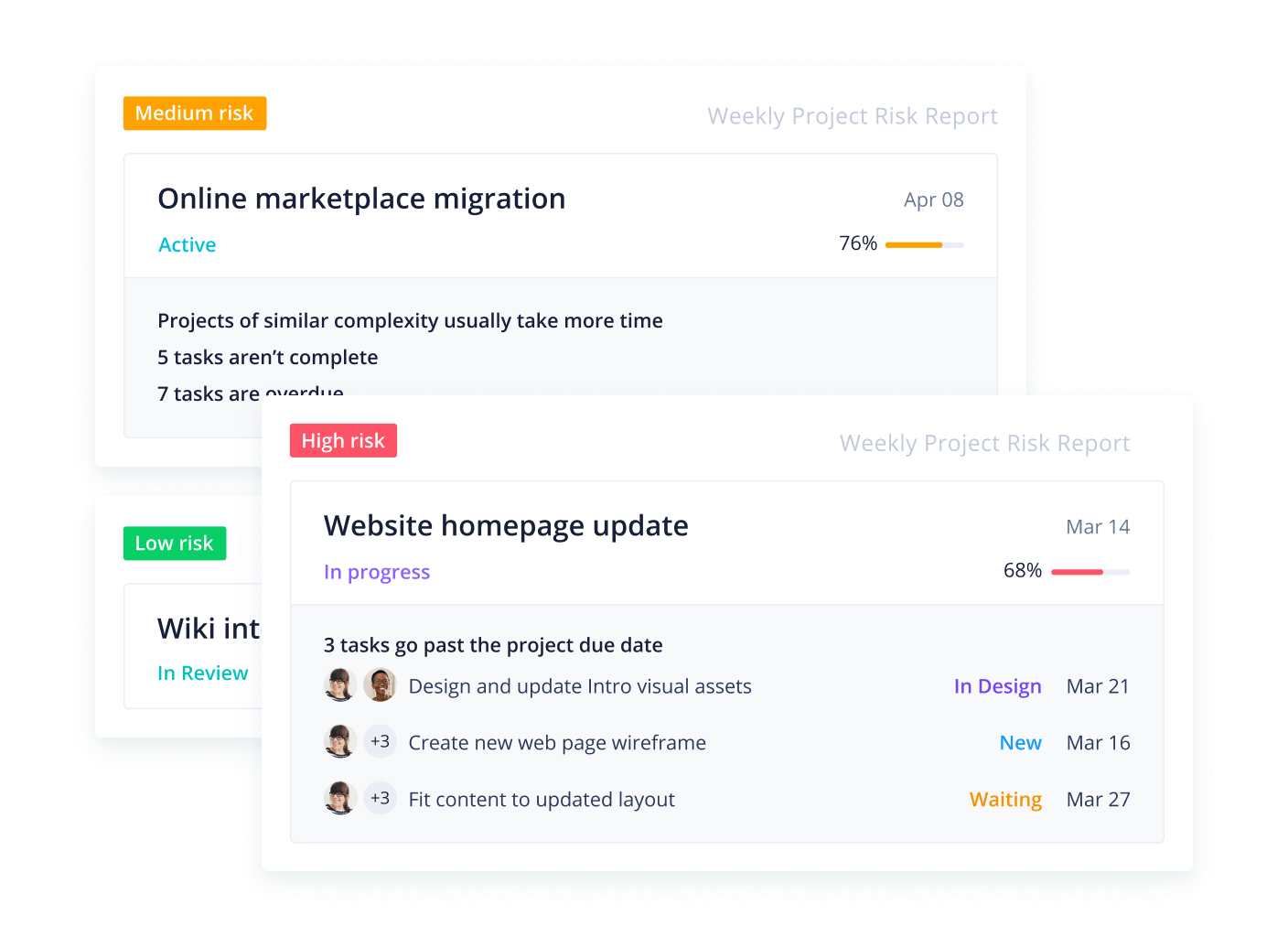The Benefits and Advantages of Agile
Since the creation of the Agile Manifesto more than two decades ago, teams across the globe have welcomed the ethos of Agile into their project management processes.
According to digital.ai’s 14th annual State of Agile report, 95% of their 40,000 respondents said that their organizations practice Agile development methods, with 61% using Agile for over three years. For those who embrace Agile, this approach has a number of advantages over other, traditional project management methodologies. Why has it become so popular? Let’s find out.
In this article, we will explore the advantages of Agile as well as its impact on project management and team dynamics. We’ll also compare Agile with different methodologies.
Before we begin, you can kick-start your Agile journey right now with Wrike’s comprehensive Agile template for organizing backlogs and planning effective sprints.
Why is Agile so popular?
According to management consulting firm McKinsey & Company, “agility is catching fire” as organizations recognize the value of the Agile methodology in a new era of work. The rapid technological advances of the 21st century have dominated the entire working landscape, affecting every industry.
The potential benefits of an Agile solution were first explored by software development teams, who used it to turbocharge their projects and reduce the time between product launches. Now, other companies are opting for Agile to accelerate their workflows and keep up with the fast-paced future of work. According to a recent study by Organize Agile, surveying professionals in 19 countries, nearly half of all organizations have been using the Agile methodology for three years or longer.
To fully understand the burgeoning popularity of Agile project management, let’s take a deeper dive into some of the key benefits.
The benefits of Agile
The benefits of Agile project management will vary from case to case, as different teams implement best practices their own way. However, it is generally understood that Agile offers the following core benefits:
1. Satisfied customers
By involving customers in the development process, Agile teams keep them in the loop and show that they value their opinion. Stakeholders want to be engaged throughout the project life cycle so they can offer feedback and ensure that the final product will be suited to their needs. These tailor-made deliverables will likely improve the overall user experience and boost customer retention.
2. Improved quality
Agile methodologies use an iterative approach to project management, meaning processes are improved upon each time an interval is repeated. This consistent focus on improvement and quality control is one of the core principles of Agile, and it helps to create superior products.
3. Adaptability
The central theme of Agile is flexibility. Agile teams are responsive to change, even at the last minute, and can adapt to it without much disruption. Project deliverables are not set in stone, so teams can easily reassess their plans and adjust their priorities to align with updated goals. Being adaptable means teams can deliver consistently and manage clients’ changing requirements effectively.
4. Predictability
Agile teams work in short time periods, sometimes referred to as sprints. These fixed durations (e.g., two weeks) make it easier for project managers to measure team performance and assign resources accordingly. It is also easier to predict costs for shorter time periods than for a long-term project, simplifying the estimation process.
5. Reduced risk
Developers regularly assess progress during sprints, meaning they have better visibility into the project and can spot potential obstacles quickly. These minor issues can be tackled before they escalate, creating an effective risk mitigation process and giving the project a greater chance of success.


6. Better communication
Agile teams prioritize face-to-face communication and continuous interaction. They will usually conduct daily meetings to ensure everyone is on the same page and working towards the same objectives. By regularly communicating with each other, they eliminate potential confusion to successfully achieve their objectives.
It is clear that the Agile methodology offers plenty of benefits to teams in software development and other sectors. But how does it compare to some of the other project management methodologies?
Unleash the power of the Agile methodology
The advantages of Agile
The Agile approach is often considered the superior option when compared to opposing project management methodologies. Let’s take a look at some examples:
Agile vs. Waterfall
Waterfall is perhaps the most well-known traditional methodology in project management. It follows a structured, linear process, where each task must be completed before moving on to the next one. Though this methodology might be perfectly suitable for a long-term project (e.g., construction), it would not work in a fast-paced software development environment, where clients regularly change their minds and insist on new deliverables.
Take US media giant NPR as an example. The organization made the switch from Waterfall to Agile to avoid “undesirable consequences,” such as a situation where the final goals differed completely from what was outlined at the beginning of the project. As they weren’t even sure what project they wanted to build, the Waterfall method of creating a fully defined plan simply did not fit. This is why they opted for Agile to allow more flexibility in their process.
Agile vs. Lean
The Lean methodology takes a streamlined approach and aims to eliminate unnecessary waste. There are clear similarities between Agile and Lean, including a focus on customer satisfaction and fast delivery. However, it could be argued that Agile has an advantage in terms of structure.
As previously stated, Agile is far more flexible than its traditional counterparts, but it still offers a desirable sense of structured organization, as seen with its clearly defined roles, regular meetings, and systematic reviews. This level of discipline makes Agile easier to implement than Lean, which is more focused on the cultural thinking within an organization. The Lean theory is not as tangible as Agile’s versatile structure and may be more challenging to put into practice.
Agile vs. PRINCE2
PRINCE2 (Projects In Controlled Environments) is a methodology characterized by product-based planning. It uses a structured project board for high-level activities while a project manager looks after day-to-day operations. PRINCE2 is useful for higher management, but it lacks the emphasis on delivery that Agile has.
Agile does not follow a predictive, plan-based method as PRINCE2 does. Instead, Agile teams focus on delivering working software to customers at the end of every sprint and use feedback to inform their development process. This short-term approach makes Agile far more adaptable to consumer needs.
The benefits and advantages of Agile methodology are evident, but it is up to each project manager to decide if they align with their team’s work process and organizational goals. Why not try Wrike’s versatile team collaboration platform to fully experience the benefits of Agile project management for yourself? Explore flexible features such as Gantt charts and Agile templates to help you decide if Agile is the best option for your team.
Streamline Agile workflows with Wrike
Agile frameworks have proven to be a powerful approach for organizations looking to thrive in today’s dynamic business environment. By embracing flexibility, collaboration, and iterative progress, teams can build better products that truly speak to customers’ needs.
To harness the full potential of Agile without spending too much time on initiation, why not try Wrike’s pre-built template? This Agile teamwork template will let you hit the ground running and establish a structured framework for your newfound Agile practices.
Don’t miss out on the opportunity to revolutionize the way your organization works. Embrace Agile and leverage Wrike’s Agile resources to supercharge your productivity, enhance team performance, and stay ahead of the competition.


